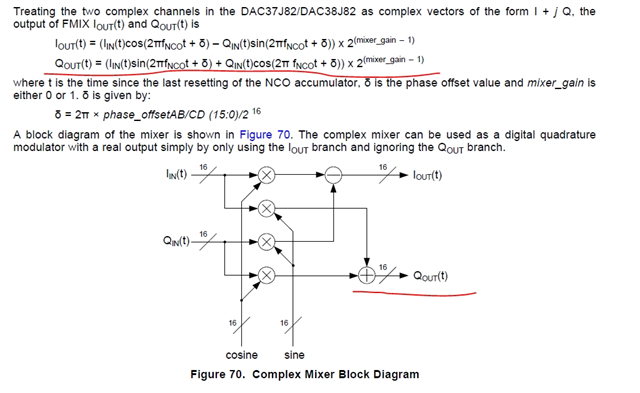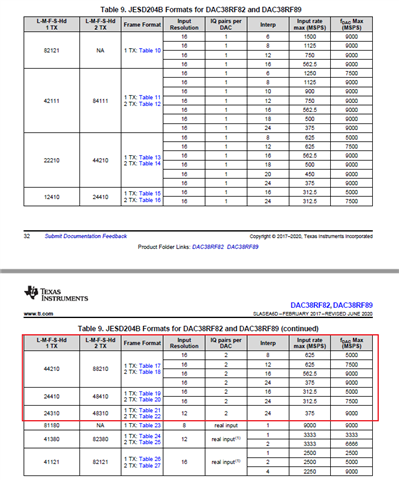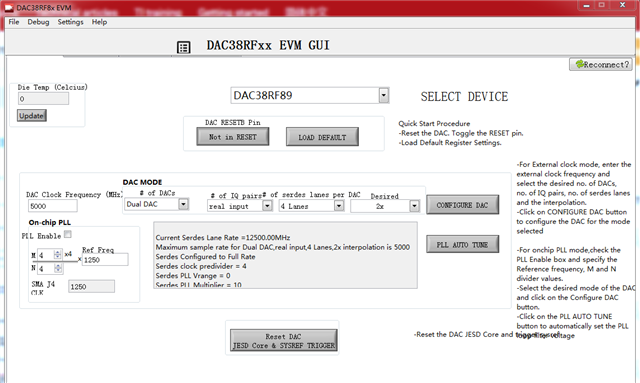Other Parts Discussed in Thread: DAC38J82
Hi,
In DAC38J82, it can output Iout and Qout at the same time in figure below. How can I do it when use DAC38RF89? It seems that dac38rf89 cannot output Iout and Qout at the same time.

This thread has been locked.
If you have a related question, please click the "Ask a related question" button in the top right corner. The newly created question will be automatically linked to this question.
Jim,
I think that wideband DUC mode can output Iout or Qout only, not output Iout adn Qout at the same time.
User,
My answer was slightly incorrect. In the wideband DUC mode, the data that would normally go to DAC B is sent to the output summer of CHA, and both outputs are summed to provide a complex output at CHA. See attached. The device can bypass the channel mixers and send the data directly to the DAC's. In this case you could send I and Q data at the same time to both DAC's. This is how the device works in real data mode with no interpolation or NCO.
Regards,
Jim
Jim,
I mean that In real data mode, I want to output Iin*cos(2π*fnco)-Qin*sin(2π*fnco) and Iin*sin(2π*fnco)+Qin*cos(2π*fnco) at the same time.
How to do it?
Regards,
John
John,
I am still confused by your request.
1. Are you using real or complex input data?
2. Do you want real or complex output data?
3. Do you plan on using the NCO?
4. Do you plan on using both DAC outputs? If you only plan on using one DAC output, are you trying to get both I and Q data summed together on this one output?
Regards,
Jim
Jim,
1. Are you using real or complex input data?-------Complex input data. But I config DAC38RF89 work in real mode,because input data rate is 2.5GSPS.PathAB of DACA for I-channel,and pathAB of DACB for Q-channel.
2. Do you want real or complex output data?-------I want compelx output data.
3. Do you plan on using the NCO?-------Yes, I use NCO.
4. Do you plan on using both DAC outputs? If you only plan on using one DAC output, are you trying to get both I and Q data summed together on this one output? -------I want to use both DAC outputs. DACA output Iin*cos(2π*fnco)-Qin*sin(2π*fnco), and DACB output Iin*sin(2π*fnco)+Qin*cos(2π*fnco). Can this be achieved?
Regards,
John
Jim,
How to config the DAC38RF89?
The input data rate is 2.5GSPS,and use 2x interpolation.
If use pathCD, I think Jesd format is only available in the red box of Table 9. But in these cases, the max input data rate is only 625M.
When jesd format uses 82121 mode, the max input data rate up to 2.5G, but the pathCD can not be used.

In the DAC38RF89 EVM tool, when congfig to real input mode, the Mixer and NCO of pathCD can not be enabled.

